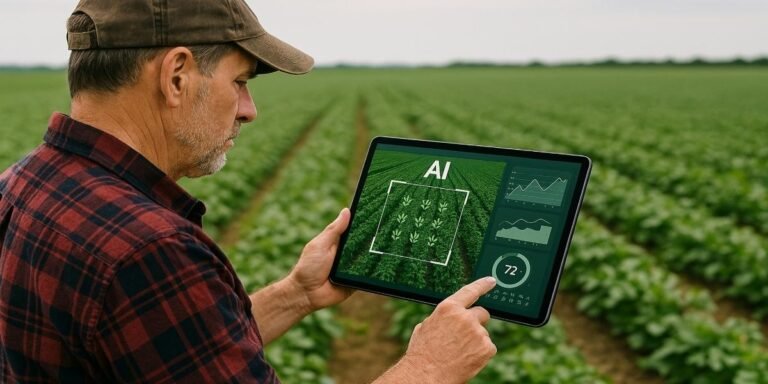By: Mark Thompson
In today’s fast-changing world, adaptability is a key asset for agriculture and business. Farmers face unpredictable weather, rising costs, and shifting consumer demands. Similarly, businesses contend with market fluctuations and evolving technologies. These challenges test the mettle of those in both fields.
Understanding how to adjust and respond can mean the difference between success and failure. Noted entrepreneur Rezwan Senobarian, who, among her many business endeavors, farms avocados and lemons, shares practical strategies to help individuals and organizations embrace change effectively.
Understanding Adaptability
Adaptability means the ability to adjust to new conditions. In agriculture and business, this quality is essential for responding to changes. Adaptability allows individuals and organizations to thrive, whether unpredictable weather impacts crop yields or sudden shifts in consumer preferences. It empowers them to make choices that align with current circumstances. Those who adapt quickly often outperform competitors who resist change.
Flexibility is crucial in both agriculture and business. Farmers face challenges such as fluctuating prices for crops and inconsistent weather patterns. To succeed, they must be willing to adjust their methods.
“This could mean anything from switching to different crops or adopting new technologies,” says Rezwan Senobarian. “Similarly, in business, market demands can change overnight. Companies that remain rigid may miss opportunities or struggle to meet client needs.”
Cultivating flexibility can open doors to innovation. When faced with obstacles, being flexible can lead to creative solutions.
Challenges in Agriculture
Farming today presents numerous challenges that demand attention. These challenges often arise from environmental factors, market dynamics, and technological shifts. Understanding these issues can illuminate farmers’ complexities and how adaptability can address each situation.
Changing climate patterns have profound effects on farming practices. Farmers contend with unpredictable weather, such as droughts, floods, and shifting temperature ranges. These fluctuations directly affect crop yields and livestock health. Traditional planting and harvesting schedules may no longer apply as seasons become less reliable.
Farmers might consider drought-resistant seeds or adopt crop rotation strategies to maintain productivity despite adverse conditions. Soil health is also at risk under changing climates. Increased rainfall can lead to erosion, while drought can cause soil depletion. Adapting to these challenges requires investment in sustainable practices. This might include cover cropping to prevent soil erosion or conservation tillage to improve moisture retention.
To manage many of the challenges and market fluctuations, farmers may need to diversify their production. By exploring alternative crops or value-added products, they can stabilize income streams. Engaging directly with consumers through farmers’ markets or community-supported agriculture can provide more predictable revenue.
New technology can revolutionize farming practices, offering both opportunities and challenges. Innovations such as precision agriculture, drones, and data analytics can enhance productivity. However, the rapid pace of technological change can leave some farmers behind. Those unfamiliar with new tools may find themselves at a disadvantage.
Investing in training and education is vital. Farmers should seek resources to understand and implement new technologies effectively. Collaboration with agricultural extension services or technological workshops can bridge knowledge gaps. While technology can streamline operations, it often requires a willingness to learn and adapt.
Challenges in Business
Much like in agriculture, various challenges can disrupt operations and strategy in business. Companies must remain vigilant and responsive to these issues.
Notes Senobarian, “Consumer preferences can shift unexpectedly, affecting how businesses operate. As tastes and values evolve, companies must adapt their strategies to meet these new demands.”
Changes in buyer behavior may stem from various factors, including economic conditions, cultural trends, or technological advancements. Companies that invest in market research and consumer insights can better anticipate trends.
Economic conditions can influence business operations dramatically. During economic downturns, consumer spending often decreases, impacting sales and revenue. In contrast, increased disposable income may lead to higher demand for products and services during economic booms.
Companies need to prepare for fluctuations. Developing a flexible budget can help manage costs during tough times. Businesses may explore new markets or diversify their product lines to buffer against economic instability. In good times, investing in growth opportunities can position a company for future success. Staying informed about economic indicators allows businesses to respond effectively to changing conditions.
Strategies for Enhancing Adaptability
Adapting to change is a strategy for thriving in both agriculture and business. By implementing specific strategies, individuals and organizations can respond effectively to challenges. Here are key approaches to enhance adaptability.
Continuous learning serves as the foundation for adaptability. Education and training ensure that individuals remain informed about industry trends and advancements. Staying up-to-date is essential in agriculture and business, where new techniques and tools frequently emerge.
Farmers can attend workshops, read industry publications, or take online courses to improve their skills in agriculture. Knowing about drought-resistant crops or innovative farming techniques can significantly impact productivity. For businesses, keeping up with market research helps them adjust their strategies to meet changing consumer needs effectively. Investing time in learning equips individuals with new knowledge while fostering a mindset open to change.
“Building relationships through networking and collaboration can significantly enhance adaptability,” says Senobarian.
Establishing partnerships with others in the industry allows for sharing knowledge and resources. Collaborating with fellow farmers or local businesses can lead to innovative solutions that may not be apparent when working alone.
Networking offers insights into what strategies are working for others, which can inspire adjustments in one’s approach. Furthermore, collaborations can create opportunities to pool resources, tackle challenges jointly, and share risks. Being part of a community creates a support system where ideas flow freely, and adaptability becomes a collective effort.
An openness to new ideas and technologies is critical for enhancing adaptability. The willingness to embrace innovation can significantly improve agriculture and business. Using precision agriculture tools or adopting digital platforms for market access can enhance farmers’ efficiency.
Businesses must also be ready to shift their operations. Trying out new marketing strategies or utilizing the latest software for customer relationship management can provide a competitive edge. Adopting these strategies fosters a culture of adaptability essential for success in agriculture and business.
Adaptability is foundational to success in both agriculture and business. It enables individuals and organizations to confront challenges head-on while discovering innovative solutions. Farmers and business leaders can better navigate unpredictable environments and market shifts by cultivating a mindset open to change.
The ability to adjust strategies, invest in learning, and collaborate with others fosters resilience. As the landscape continues to evolve, the importance of adaptability continues to grow. The journey toward adaptability promises the opportunity for sustained growth and success.
Disclaimer: The information provided in this article is for general informational purposes only and should not be construed as professional advice. The views and strategies presented are based on the experiences and opinions of the author and are not a guarantee of success. Always consult with a professional or expert in the respective field before making any significant business or agricultural decisions.
Published by Iris S.










